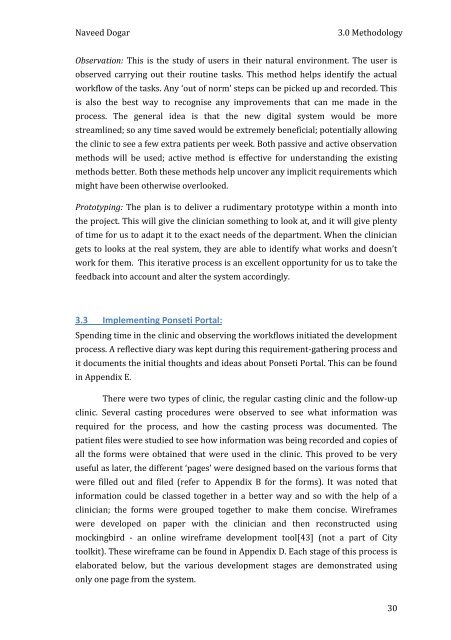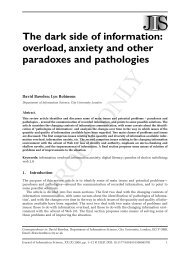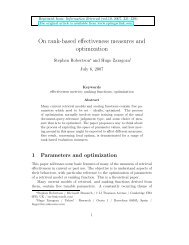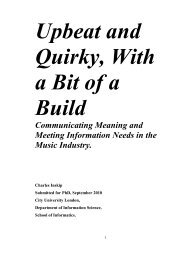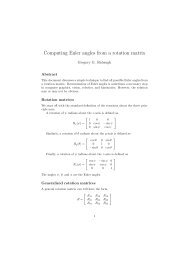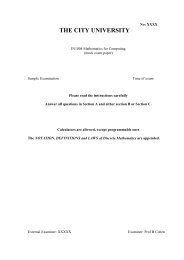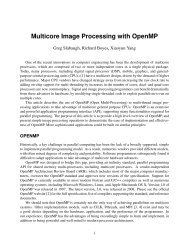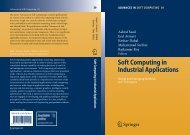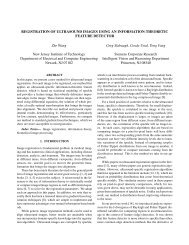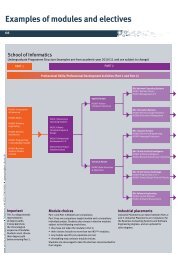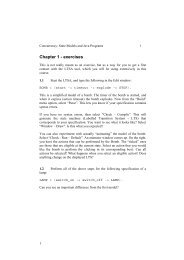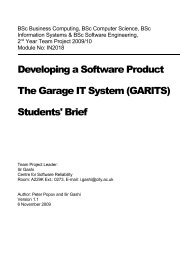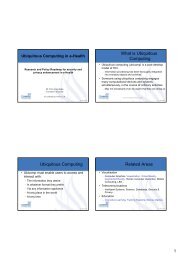Evaluation Of CityEHR Toolkit Through Development Of An Open ...
Evaluation Of CityEHR Toolkit Through Development Of An Open ...
Evaluation Of CityEHR Toolkit Through Development Of An Open ...
You also want an ePaper? Increase the reach of your titles
YUMPU automatically turns print PDFs into web optimized ePapers that Google loves.
Naveed Dogar<br />
3.0 Methodology<br />
Observation: This is the study of users in their natural environment. The user is<br />
observed carrying out their routine tasks. This method helps identify the actual<br />
workflow of the tasks. <strong>An</strong>y ‘out of norm’ steps can be picked up and recorded. This<br />
is also the best way to recognise any improvements that can me made in the<br />
process. The general idea is that the new digital system would be more<br />
streamlined; so any time saved would be extremely beneficial; potentially allowing<br />
the clinic to see a few extra patients per week. Both passive and active observation<br />
methods will be used; active method is effective for understanding the existing<br />
methods better. Both these methods help uncover any implicit requirements which<br />
might have been otherwise overlooked.<br />
Prototyping: The plan is to deliver a rudimentary prototype within a month into<br />
the project. This will give the clinician something to look at, and it will give plenty<br />
of time for us to adapt it to the exact needs of the department. When the clinician<br />
gets to looks at the real system, they are able to identify what works and doesn’t<br />
work for them. This iterative process is an excellent opportunity for us to take the<br />
feedback into account and alter the system accordingly.<br />
3.3 Implementing Ponseti Portal:<br />
Spending time in the clinic and observing the workflows initiated the development<br />
process. A reflective diary was kept during this requirement-gathering process and<br />
it documents the initial thoughts and ideas about Ponseti Portal. This can be found<br />
in Appendix E.<br />
There were two types of clinic, the regular casting clinic and the follow-up<br />
clinic. Several casting procedures were observed to see what information was<br />
required for the process, and how the casting process was documented. The<br />
patient files were studied to see how information was being recorded and copies of<br />
all the forms were obtained that were used in the clinic. This proved to be very<br />
useful as later, the different ‘pages’ were designed based on the various forms that<br />
were filled out and filed (refer to Appendix B for the forms). It was noted that<br />
information could be classed together in a better way and so with the help of a<br />
clinician; the forms were grouped together to make them concise. Wireframes<br />
were developed on paper with the clinician and then reconstructed using<br />
mockingbird - an online wireframe development tool[43] (not a part of City<br />
toolkit). These wireframe can be found in Appendix D. Each stage of this process is<br />
elaborated below, but the various development stages are demonstrated using<br />
only one page from the system.<br />
30


